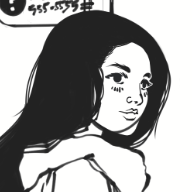
pixelworker
Members-
Posts
88 -
Joined
-
Last visited
Profile Information
-
Gender
Not Telling
Recent Profile Visitors
2,026 profile views
-
 Westerwälder reacted to a post in a topic:
Canva
Westerwälder reacted to a post in a topic:
Canva
-
 pixelworker reacted to a post in a topic:
Canva
pixelworker reacted to a post in a topic:
Canva
-
 pixelworker reacted to a post in a topic:
Canva
pixelworker reacted to a post in a topic:
Canva
-
 pixelworker reacted to a post in a topic:
Canva
pixelworker reacted to a post in a topic:
Canva
-
I really regret having bought the v2 update. I can't imagine any positive impact on Affinity. I doubt that they get just more development resources. I don't want cloud integration. When I want to work collaborative I use figma and I couldn't care less about canva. Do you have any non-web-based, professional alternatives in mind for designer and photo to create screen mock-ups? (vector and pixel based) and simple photo editing?
-
 pixelworker reacted to a post in a topic:
Thank you for making the Canva deal happen
pixelworker reacted to a post in a topic:
Thank you for making the Canva deal happen
-
 pixelworker reacted to a post in a topic:
Questions on Canva acquiring Affinity
pixelworker reacted to a post in a topic:
Questions on Canva acquiring Affinity
-
 pixelworker reacted to a post in a topic:
Questions on Canva acquiring Affinity
pixelworker reacted to a post in a topic:
Questions on Canva acquiring Affinity
-
 Mordaga reacted to a post in a topic:
Preferences to disable automatic update checks.
Mordaga reacted to a post in a topic:
Preferences to disable automatic update checks.
-
 ATP reacted to a post in a topic:
Offline activation
ATP reacted to a post in a topic:
Offline activation
-
Offline activation
pixelworker replied to Peccavi's topic in Feedback for the Affinity V2 Suite of Products
It's pretty awesome that the staff is listening and discussing here. I'm wondering. Could this not be solved by a way to add your license to your affinity account after purchasing. And when you have it registered in you account you get a serial and you could use the this serial for any activation?- 79 replies
-
- suggestions
- offline
-
(and 1 more)
Tagged with:
-
 pixelworker reacted to a post in a topic:
Offline activation
pixelworker reacted to a post in a topic:
Offline activation
-
 Patrick Connor reacted to a post in a topic:
Analytics
Patrick Connor reacted to a post in a topic:
Analytics
-
 Frozen Death Knight reacted to a post in a topic:
Analytics
Frozen Death Knight reacted to a post in a topic:
Analytics
-
Analytics
pixelworker replied to Ash's topic in [ARCHIVE] 2.5, 2.4, 2.3, 2.2 & 2.1 Features and Improvements
I like it a lot that you ask for the data and try to be transparent. It's very much noticed that you trying it to do the right way! And it should be the standard to show the raw data of what will be shared. Is it be possible to add away to the program to show the actual shared JSON data that will be sent? A simple save as to disc or showing it in a pop-up is more than enough. This would increase trust a lot. I like to help with data as long as I'm 100 percent in control if I want to do it and can check what I share. -
 thomasp reacted to a post in a topic:
Preferences to disable automatic update checks.
thomasp reacted to a post in a topic:
Preferences to disable automatic update checks.
-
 pixelworker reacted to a post in a topic:
Working pixel perfect with Designer 2 still does not work which is super frustrating for GUI work
pixelworker reacted to a post in a topic:
Working pixel perfect with Designer 2 still does not work which is super frustrating for GUI work
-
From Affinity: If you’ve purchased from the Affinity Store — each time you start the Affinity Store software it will check for updates and offer any available update. The latest update will install over the top of any earlier version, with no need to uninstall. You can download the latest installer by logging into the affinity store here and find the order in your account and use the "Download" button in there. Alternatively, this new release (and previous versions of Affinity Publisher for Windows) can be downloaded from this link. (those installers are NOT for Windows Store purchases). It says there is a automatic check at startup. Is there a way to disable it? Please add a way to do so if there isn't. I prefer no automatic established connections from a program. I prefere to pull for updates manually.
-
 pixelworker reacted to a post in a topic:
What ergonomic design principles call for minimal contrast and reduced readability in user interfaces?
pixelworker reacted to a post in a topic:
What ergonomic design principles call for minimal contrast and reduced readability in user interfaces?
-
 pixelworker reacted to a post in a topic:
Working pixel perfect with Designer 2 still does not work which is super frustrating for GUI work
pixelworker reacted to a post in a topic:
Working pixel perfect with Designer 2 still does not work which is super frustrating for GUI work
-
Firstly, it's not only in Designer. Photo has very similar issues. I agree with a lot of what you wrote but I don't understand your conclusion. 😉 The user should decide. That's why there are options like "Force pixel alignment" etc.. The only issue is that it's only working for some workflows, while others ignore it. Currently it's rather a "Force pixel alignment for some actions" It should be no problem to add something like "quantise clicks to pixel" and "keep whole pixel at transform" to the menu to solve these problems and stay as flexible as now. Correcting it manually all the time is adding hours and hours of overhead monthly for me, it's prone to error and simply frustrating because of many manual corrections I have to make. I think the way Figma and Adobe doing it is the better compromise for daily work. When you need precision you simple use a higher canvas size. It's not that I don't like the freedom in Affinity and Affinity could be better by combining both things via options, but established workflows like pixel perfect work have to work time efficient too. By the way, for other units like mm or pt there is no real force snapping at all. Even setting a 1mm grid does not work really well. You can still place between the grid in some cases and need to correct it manually. When you doing these things as professional work on a daily base it adds up. I have no time to correct these things all the time manually when the computer could support me.
-
 Brian_J reacted to a post in a topic:
Working pixel perfect with Designer 2 still does not work which is super frustrating for GUI work
Brian_J reacted to a post in a topic:
Working pixel perfect with Designer 2 still does not work which is super frustrating for GUI work
-
Affinity Design is a hybrid design application. Advertised for screen design too. Photo is a pixel manipulation software. It's not rocket science to force the pixel to the grid, I don't request any next level AI feature. Just that "force pixel alignment" actually works reliable. I really do appreciate the help and the suggested workarounds, but at the same time I'm slowly starting to wonder why the need for pixel perfection in Affinity has to be discussed.😉 It's a absolute key requirement for many professional tasks like screen design. It's not about the need to craft pixel art. At least for me. 😉
-
Exactly 😉 And I expect that Affinity will help me with that. Like any other program does that I'm aware of. That's why I expect that placing e.g. an artistic text will always be places at integer values with "force pixel alignment" that the outcome is reproducible. That's why scaling items with locked ratio should 'optionally' only make whole pixel positions possible that I don't have to correct it all the time manually. I'm have not given up completely. I still hope someone from Affinity will join the discussion in some way.
-
I appreciate your help. But I think you got it wrong with the issue of font rendering without locking to the grid It's not about the font. It's about that a font gets a different raster representation when moved by by non integer pixel values. This creates (different) aliasing. To give you an example. - Use Artistic text "abcdefg" and place it at X (100px) Y (100px) with font size 10px. Use any font you like. - Copy it below that you see both. - Go to transform panel and make sure that the first one starts at integer pixel values (100; 100). - Change the X of the second to non integer value (x.7). - Make sure to use view mode pixel or export it as an image. The result is that both texts have a different outcome on the pixel grid and thus look differently. This is obviously mostly an issue for exports to screen resolutions (90 - 200ppi) obviously. This will be especially obvious when you use font with perfect pixel hinting like the examples above. There is no solution other than respecting the pixel grid when "force pixel alignment" is active.
-
 debraspicher reacted to a post in a topic:
Working pixel perfect with Designer 2 still does not work which is super frustrating for GUI work
debraspicher reacted to a post in a topic:
Working pixel perfect with Designer 2 still does not work which is super frustrating for GUI work
-
Thanks for the explanation. That's a drawback. But good to know that I'm not just to stupid to find the right option. Maybe it's a different use-case. I can imagine doing that for a headline in single image. But for gui design this is not a workflow that is possible. Aligning front at multiple document and at many places all the time is not a possible workflow. It'd take ages. I need to edit text often so live edit is a requirement. That said, for this use-case text frames are a solution which work ok. They do not not start on subpixel level and font looks the same all the time. By the way. When the artistic text tool started always on the pixel grid with "force pixel alignment" active it would not be a problem. In general, I'm a bit disillusioned currently. I would like to see a bit communication by Affinity about the problem.
-
One point I do not understand. The suggested manual hinting at subpixel level is super dangerous and I want to avoid it at all cost, because same characters will look differently. And "a" should always look like another "a". The differences by subpixel movement on the raster rendering for small and normal font can be quite big.
-
😉 Thanks for all the input. That's true. It's a serious issue and I'm at a point thinking that Affinity might not the right product for me. Which is strange because I consider pixel perfect workflow a totally basic thing. I like Serif a lot and would like keep using their products. That's why I try to bring it up again. I tried it long time ago without any success.



